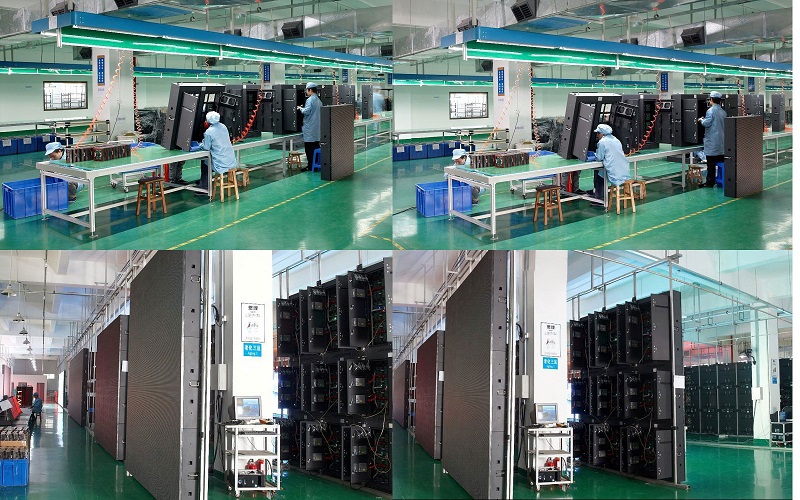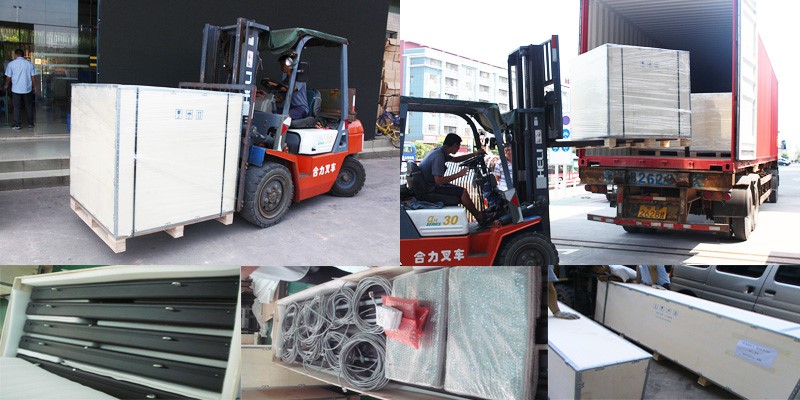CUSTOM SUPPORT & SALE
CUSTOM SUPPORT & SALE
LED materials take up about 40% to 70% of the cost of led display screen, and the dramatic decrease in the cost of LED displays has benefited from the reduced cost of LED materials. The quality of the LED display Encapsulation has a great influence on the quality of the LED display. The key to ensure LED display Encapsulation reliability is the choice of LED chip materials, the choice of Encapsulation materials, and process control. In addition, stringent reliability standards are the key to verifying high quality LED materials.
As the LED display gradually penetrates into the high-end market, the quality requirements for LED display materials are also increasing. This article on the practical experience of high-quality LED display Encapsulation, to explore the key technologies to achieve high-quality LED display materials.
The status of LED display Encapsulation
SMD (Surface Mounted Devices) refers to surface mounted Encapsulation structure LEDs, which mainly include LED (ChipLED) with PCB board structure and LED (TOP LED) with PLCC structure. This article focuses on TOP LEDs. The SMD LEDs mentioned below refer to TOP LEDs.
The main materials used in the LED display Encapsulation include brackets, chips, die attach adhesives, bond wires, and Encapsulation adhesives. The following describes some basic developments in the domestic market from the perspective of Encapsulation materials.
1, LED bracket
(1) The role of the stent. The PLCC (Plastic Leaded Chip Carrier) carrier is a carrier for SMD LED materials and plays a key role in the reliability and light output of the LED.
(2) The production process of the stent. PLCC stent production process includes metal strip punching, electroplating, PPA (polyphthalamide) injection molding, bending, five-dimensional three-dimensional inkjet and other processes. Among them, electroplating, metal substrates, and plastic materials occupy the main cost of the stent.
(3) Improved design of the structure of the bracket. Because the PFC and the metal bond are physically combined in the PLCC support, the gap becomes larger after the reflow furnace at a high temperature, which causes water vapor to easily enter the device along the metal channel and affect the reliability.
In order to improve product reliability to meet the high-end market demand for high-quality LED display materials, part of the Encapsulation factory has improved the structure design of the bracket, such as Foshan Guoxing Optoelectronics Co., Ltd. adopts advanced waterproof structure design, bending and stretching, etc. The method is to extend the water vapor entry path of the stent, and at the same time, multiple waterproof measures such as a waterproof groove, a waterproof step, and a drainage hole are added inside the stent, as shown in FIG. 1 . This design not only saves Encapsulation costs, but also improves product reliability. It has been widely used in outdoor LED display products. The SAM (Scanning Acoustic Microscope) was used to test the airtightness of the LED brackets after the bending structure design and the normal brackets. As a result, the airtightness of the products using the bent structure design was better.
2, the chip
The LED chip is the core of the LED device, and its reliability determines the lifetime and luminous performance of the LED device and even the LED display. The cost of LED chips accounts for the largest total cost of LED materials. With the cost reduction, LED chip size cutting smaller and smaller, but also brought a series of reliability problems.
As can be seen from following image, as the size is reduced, the pads of the P electrode and the N electrode are also reduced, and the reduction of the electrode pad directly affects the quality of the bonding wire, which easily leads to the detachment of the ball from the electrode or the detachment of the electrode itself during the Encapsulation process and the use process. Final failure. At the same time, the distance a between the two pads will also be reduced, which will make the current density at the electrodes excessively increase, and currents will locally accumulate at the electrodes. The unevenly distributed current will seriously affect the performance of the chip and cause local temperature of the chip. Too high, uneven brightness, easy leakage, dropped electrodes, and even low luminous efficiency, eventually led to lower reliability led display.

Contact us to make small pixle LED display screen for your requirement now.
Why Choose Colorlight LED To Be Your Partner ? 12 Years Experience on Led Display Screen Manufacturing. Excellent after-sale service to meet your standards of excellence. 3 Years High Quality Warranty provided. 5% Spare Parts for Your Order Replacement. Convenient online Store (www.ledinthebox.com) for you to order LED display parts with best Price and fast DHL shipping. High Quality With Global Standards,CE EMC-B,RoHs,FCC,UL Certificated.


Contact: Lee
Phone: +86-132-6566-7728
E-mail: info@colorlitled.com
Add: Tangtou Industrial Park,Shiyan,Baoan,Shenzhen